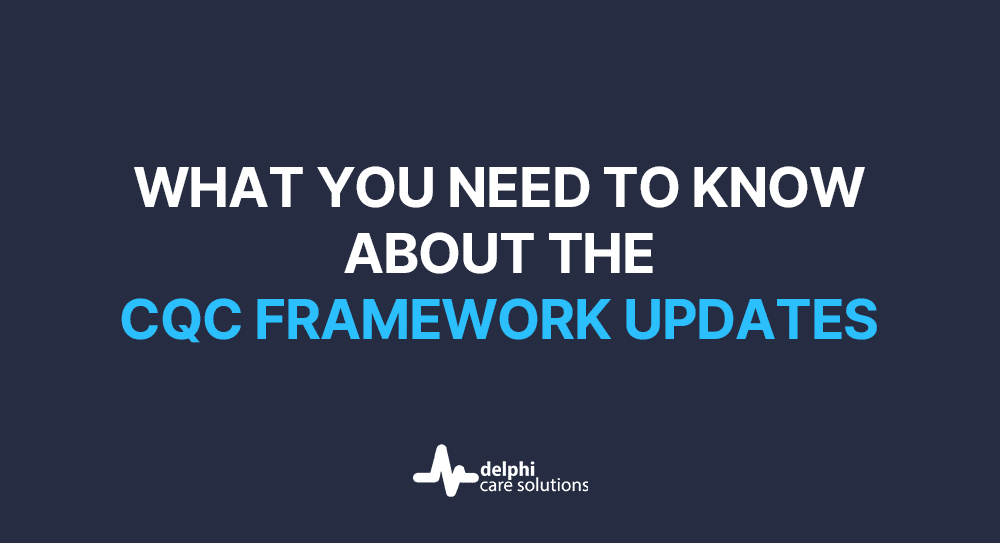Scott McMurray /
June 2023
Does your care environment need to register with the CQC?

The Care Quality Commission (CQC) plays a crucial role in regulating care environments to ensure safety and quality of care. It is mandatory for certain types of service providers to register with it. This article will tell you what you need to know to determine if your care business is one of them and, if so, what you need to do.
What is the CQC?
The Care Quality Commission (CQC) is an autonomous regulatory organisation in the United Kingdom. Its primary objective is to uphold the safety, effectiveness and quality of care within a diverse range of healthcare and social care services. By fulfilling this mission, the CQC actively protects the welfare of service users and promotes excellence in care across various care settings.
Benefits of CQC registration
The main benefit of CQC registration is that it shows a service is well run. All other benefits are derived from that. More specifically, the point of CQC registration is to demonstrate that a service complies with regulatory standards and is committed to delivering high-quality care.
This means that it provides a safe, effective, well-managed and responsive environment for all users. As a result, care users and other stakeholders (e.g., families) can have confidence in the service that is being provided.
Just as importantly, CQC registration also demonstrates to potential employees that a care facility provides a safe and rewarding work environment. This can make it much easier to recruit and retain essential staff.
What types of care providers require CQC registration?
Registration with the CQC is mandatory for all of the following care services:
- Healthcare services (e.g., Hospitals, clinics and general practices)
- Social care services (e.g., residential care homes, nursing homes and home care agencies)
- Independent clinics (e.g., clinics offering cosmetic treatments or fertility services)
Additionally, other care providers may also fall under the scope of CQC registration. This includes services such as dental practices, mental health facilities and substance abuse treatment centres.
It is important for providers in these sectors to understand the requirements and determine whether they need to register with the CQC. If a service fails to register with the CQC when it should, it may face serious legal consequences, including closure.
Determining the need for CQC registration
There are five main factors that determine whether or not a care environment is likely to need CQC registration. These are as follows.
Scope of services
The CQC considers the scope and nature of the services offered by a care environment. For instance, healthcare providers offering medical diagnosis, treatment or surgical procedures are typically required to register. Social care providers offering services like personal care, accommodation or support for daily living also fall under the registration requirements. The CQC evaluates the potential risks associated with these services and their impact on the well-being of service users.
Vulnerability of service users
The vulnerability of individuals accessing care services is a significant factor in determining the need for CQC registration. Services that cater to vulnerable populations, such as elderly care homes, mental health facilities or services for people with disabilities, are generally subject to registration. The CQC aims to ensure that these services meet specific standards to protect and support the well-being of individuals who may be more susceptible to harm or exploitation.
Regulations and legal requirements
Certain care services are governed by specific regulations and legal requirements that necessitate CQC registration. For example, clinics providing specialised treatments like in-vitro fertilisation (IVF) or cosmetic surgeries are required to register with the CQC. These regulations aim to safeguard patients’ rights, ensure appropriate standards of care and mitigate potential risks associated with these procedures.
Potential risks and public safety
When assessing the need for registration, the CQC carefully evaluates the potential risks within care environments and their implications for public safety. Key factors considered include infection control, medication management, safeguarding protocols and emergency preparedness. The presence of robust policies, procedures and systems to safeguard service users from harm and guarantee their safety is thoroughly assessed by the CQC.
Impact on the quality of care
The CQC assesses whether the care environment meets essential quality standards, including factors like staff qualifications, training and supervision, as well as effective management of the care service. This evaluation ensures that the care environment is capable of delivering safe, effective and person-centred care.
It’s important to note that the need for CQC registration may vary depending on the nature and scope of services provided by different care environments. It is therefore essential for providers to evaluate their operations carefully and determine whether they fall within the CQC’s registration requirements. The CQC’s website provides detailed information and resources to assist care providers in understanding the registration requirements and processes.
The CQC registration process
The process of becoming registered with the Care Quality Commission (CQC) involves four main steps. Here is an overview of them.
Preparing the application: Care providers interested in registering with the CQC must first prepare their application. This includes gathering all the necessary information and documentation required by the CQC. The application typically involves providing details about the care service, its management, staff qualifications, policies and procedures.
Submitting the application and supporting documents: Once the application is fully prepared, it should be submitted to the CQC along with the necessary supporting documents. These documents cover proof of identity, disclosure and barring service (DBS) checks for staff, safeguarding policies, risk assessments and any other pertinent information. Additionally, care providers are generally required to pay an application fee at this stage, the cost of which varies based on the size and type of the care service.
CQC assessment and inspection: After receiving the application, the CQC assesses the information provided and may conduct an inspection of the care environment. The assessment and inspection process involves evaluating various aspects, such as the safety and quality of care, governance, leadership and the provider’s ability to meet the required standards. Inspections may include interviews with staff and service users, observations of care practices and a review of documentation.
Registration decision and ongoing compliance requirements: Following the assessment and inspection, the CQC makes a registration decision. If the care service meets the necessary standards, registration is granted. The care provider receives a unique registration number, which must be displayed in their premises and on their promotional materials. Once registered, care providers have ongoing compliance requirements to meet. These include submitting regular notifications and updates to the CQC, ensuring ongoing compliance with standards and being open to further inspections and assessments by the CQC.
Care providers should be aware that the registration process may have slight variations depending on the type of care service and the specific requirements outlined by the CQC. It is therefore crucial for providers to consult the CQC’s guidance and available resources, as they offer comprehensive instructions and assistance throughout the registration process.
If you would like to chat with one of our consultants, then why not book a meeting now.
We look forward to hearing from you!
Book your meeting now














